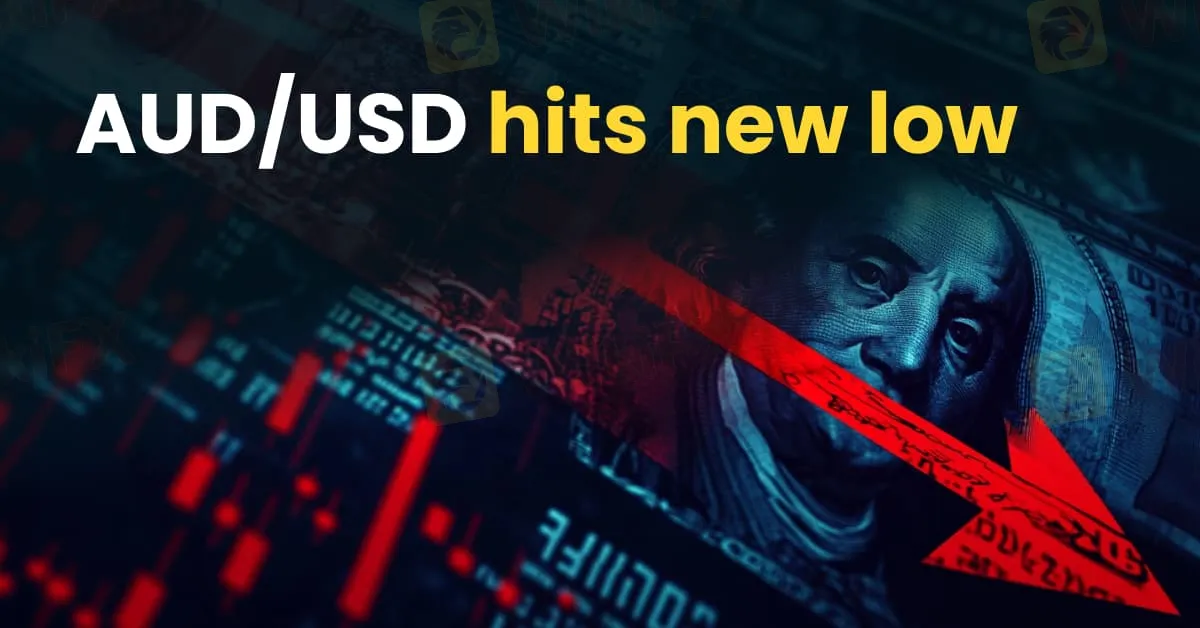AUD/USD Hits New Lows as Panic Selling Unfolds Amid Robust U.S. Jobs Report
Abstract:The Australian dollar tumbled to a fresh multi-year low of 0.5932 against the U.S. dollar, breaking through several key technical support levels and triggering widespread panic selling in the currency markets. The sharp decline comes at a time when mixed signals from economic data and monetary policy expectations are creating a volatile environment for traders and investors alike.

The Australian dollar tumbled to a fresh multi-year low of 0.5932 against the U.S. dollar, breaking through several key technical support levels and triggering widespread panic selling in the currency markets. The sharp decline comes at a time when mixed signals from economic data and monetary policy expectations are creating a volatile environment for traders and investors alike.
Technical Breakdown Sparks Market Sell-Off
The AUD/USD pairs plunge below 0.5932 marks the lowest level in recent years, as the Australian dollar succumbed to selling pressure on multiple fronts. Technical analysts noted that the pair breached several important support levels, prompting a cascade of stop-loss orders and panic selling. Market participants reacted swiftly, with many traders rushing to exit positions as risk aversion took hold. The breakdown has further exacerbated concerns that the underlying momentum could force the currency lower if investor sentiment fails to stabilize.
Strong U.S. Jobs Data Raises Mixed Signals
Adding to the complex economic landscape, the latest U.S. Labor Department data revealed that nonfarm payrolls surged by 228,000 in March—significantly outperforming Februarys revised gain of 117,000. This robust job creation suggests that the U.S. labor market remains strong despite ongoing global economic uncertainties. However, the report also showed that the unemployment rate ticked up slightly to 4.2% from 4.1%, surpassing market expectations and hinting at potential headwinds for the U.S. economy.
Fed Rate-Cut Expectations Remain Intact
Despite the encouraging employment numbers, market sentiment appears to be focused on the prospect of further monetary easing. Investors have already priced in a total of 100 basis points of Fed rate cuts over the course of the year, and some analysts do not rule out the possibility of an additional (fifth) rate cut. The expectation of lower borrowing costs is seen as a counterbalance to the strong jobs data, reinforcing the belief that accommodative monetary policy will prevail in the coming months.
Implications for Investors
For investors, the confluence of a sharply weakening Australian dollar and strong U.S. labor market data creates a paradox. On one hand, the robust U.S. jobs report supports the economic fundamentals of the dollar, while on the other, a deteriorating AUD/USD technical picture suggests that risk-off sentiment remains prevalent in global currency markets.
A weaker Australian dollar could benefit export-oriented Australian companies by making their goods more competitive overseas. Conversely, for Australian consumers and businesses that rely on imported products, the lower exchange rate could lead to higher costs and increased inflationary pressures. Moreover, if the Fed continues its course of rate cuts amid persistent economic uncertainty, further depreciation of risk-sensitive currencies like the Aussie might be on the horizon.
Looking Ahead
Analysts advise that traders and investors closely monitor upcoming economic indicators, including inflation readings and central bank commentary, to gauge the trajectory of both the U.S. economy and the AUD/USD pair. With technical weaknesses now clearly evident and monetary policy expectations still leaning toward further easing, market volatility is likely to persist in the near term.
In summary, while the U.S. labor markets resilience provides a positive backdrop for the dollar, the pronounced technical breakdown in the AUD/USD pair underscores the challenges facing the Australian currency. Investors are left balancing between the strong fundamentals of the U.S. economy and the caution warranted by a risk-off environment in global currency markets.

Read more

Broker Comparsion: FXTM vs AvaTrade
FXTM and AvaTrade are two well-established online brokers offering forex and CFD trading across global markets. Both enjoy strong reputations and high ratings on WikiFX—FXTM holds an AAA overall rating, while AvaTrade scores 9.49/10, indicating they’re regarded as reliable choices by the community. However, since brokers have great reputation in the industry, how do we know which one is more suitable for individuals to invest in? Today's article is about the comparison between FXTM and AvaTrade.

Shocking Move: Yen Breaks Past 140 Barrier!
The yen's breakout above the 140 mark has caught global attention, and the reasons behind it are more than technical.

FINRA fines SpeedRoute for alleged rule violations
The Financial Industry Regulatory Authority (FINRA) has imposed a $300,000 fine on SpeedRoute LLC for a series of supervisory, risk management, and anti-money laundering (AML) program deficiencies spanning from 2017 to the present. Of this amount, $75,000 is payable to FINRA, with the remainder offset by SpeedRoute’s limited ability to pay. In addition to the monetary penalty, SpeedRoute has been censured and ordered to overhaul its compliance framework, including enhancing its written supervisory procedures (WSPs) for market access controls and strengthening its AML program.

Nigeria's Oil Crisis: How Are Stakeholders Responding?
Despite being rich in oil, Nigeria struggles with refining shortages. What’s behind this paradox, and how are different actors reacting?
WikiFX Broker
Latest News
Love, Investment & Lies: Online Date Turned into a RM103,000 Scam
Broker Took 10% of User's Profits – New Way to Swindle You? Beware!
Pi Network: Scam Allegations Spark Heated Debate
Broker Comparsion: FXTM vs AvaTrade
Account Deleted, Funds Gone: A New Broker Tactic to Beware Of?
Broker’s Promise Turns to Loss – Funds Disappear, No Compensation!
StoneX Subsidiary, Gain Global Markets Bermuda, Penalized for Trading Misconduct
El Salvador and U.S. Launch Cross-Border Crypto Regulatory Sandbox
The Instagram Promise That Stole RM33,000
Coinbase Launches Bitcoin Yield Fund for Institutional Investors
Rate Calc
